 |
 |
 |
| |
Sustained Virologic Response Reduces the Incidence of
Extrahepatic Manifestations
in Chronic Hepatitis C Infection
|
| |
| |
Reported by Jules Levin
AASLD 2018 Nov 9-13 SF
Carmine Rossi, PhD
BC Centre for Disease Control
November 11th, 2018
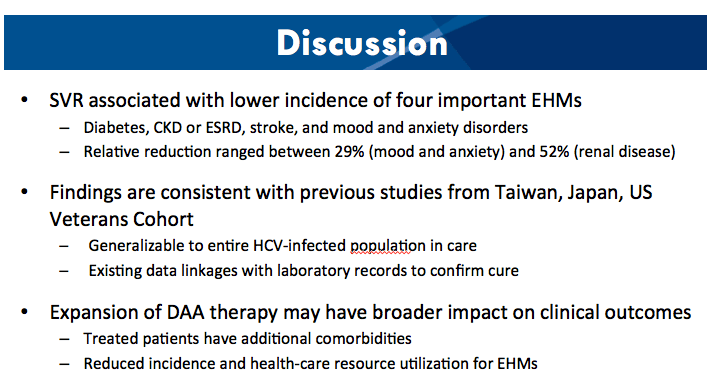
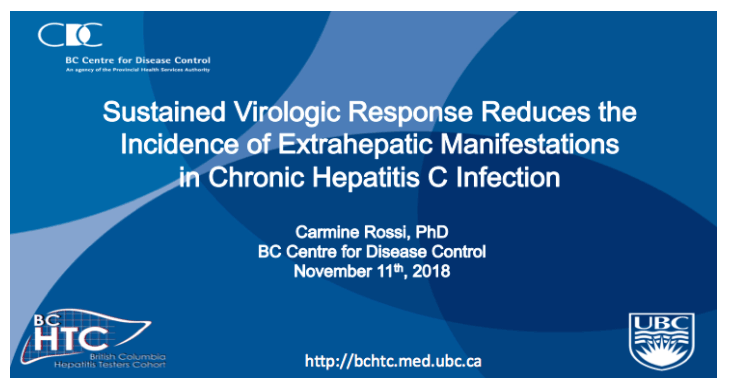
program abstract
Background: The burden of extrahepatic manifestations (EHMs) associated with chronic hepatitis C virus (HCV) infection has been increasing. We evaluated the effect of developing a sustained virologic response (SVR) to HCV treatment on the incidence of EHMs.
Methods: We used data from the British Columbia Hepatitis Testers Cohort (BC-HTC), which includes all individuals tested for HCV or reported to public health as a HCV case linked with their corresponding laboratory, administrative and pharmacy data. We identified individuals initiating interferon-based therapy between 1999/01/01 and 2014/12/31 with follow-up until 2015/12/31. Incident EHMs included diabetes, chronic kidney disease or end-stage renal disease (CKD-ESRD), ischemic or hemorrhagic stroke, ischemic heart disease (IHD), osteoporosis with fractures, and mood disorders (MD), including depression. We compared post-treatment incidence rates and cumulative incidence (up to 10 years), separately for each EHM, between SVR and non-SVR individuals, starting 12 weeks after therapy, after removing prevalent cases. Cox models, adjusted for demographic and clinical covariates, were used to estimate hazard ratios (HRs) and 95% confidence intervals (CIs) for SVR and each EHMs.
Results: We included 10,566 individuals in this analysis, of which 5,993 (57%) achieved SVR. Overall, most were male (68%), with a median age 50 years (interquartile range: 42, 56), and were infected with HCV genotype 1 (49%). Common comorbidities included history of injection drug use (21%), mental illness (25%), or heavy alcohol use (19%), hypertension (19%), advanced liver disease (8%), and HIV coinfection (5%).
For all EHMs, crude incidence rates, per 1,000 person-years, were lower among those with SVR: diabetes (7.0 vs. 13.0), CKD-ESRD (3.6 vs. 8.1), stroke (1.3 vs. 2.7), IHD (8.7 vs. 9.9), osteoporosis with fractures (1.1 vs. 2.2), and MD (33 vs. 44). EHM-specific cumulative incidence by SVR status and adjusted HRs are shown in the Figure. With the exception of IHD, SVR was associated with significantly marked reductions in the incidence of EHMs, ranging from 21% for MD (HR 0.79, 95% CI: 0.69, 0.90) to 53% for CKD/ESRD (HR 0.47, 95% CI: 0.38, 0.58).
Conclusion: SVR leads to substantial reduction in extrahepatic manifestations. Scaling up of treatment is expected to have impact on EHMs in addition to liver outcomes as people with a higher prevalence of comorbidities and at elevated risk of EHMs are treated.
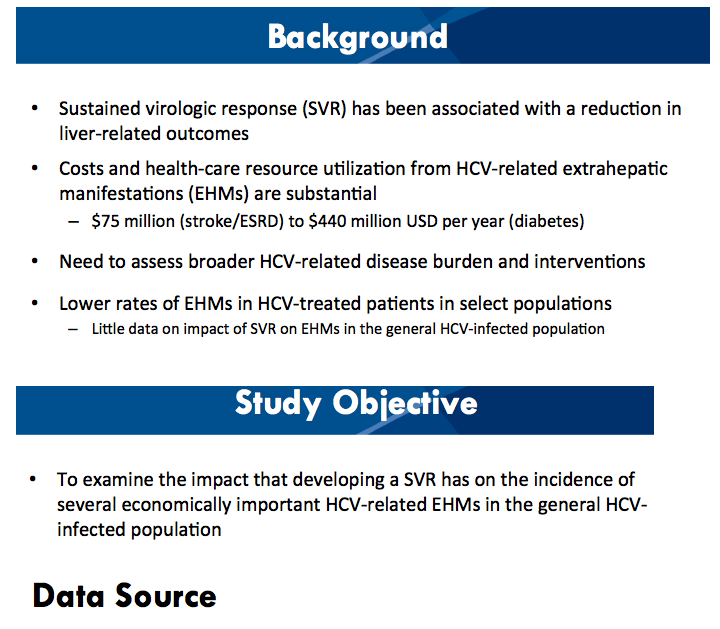
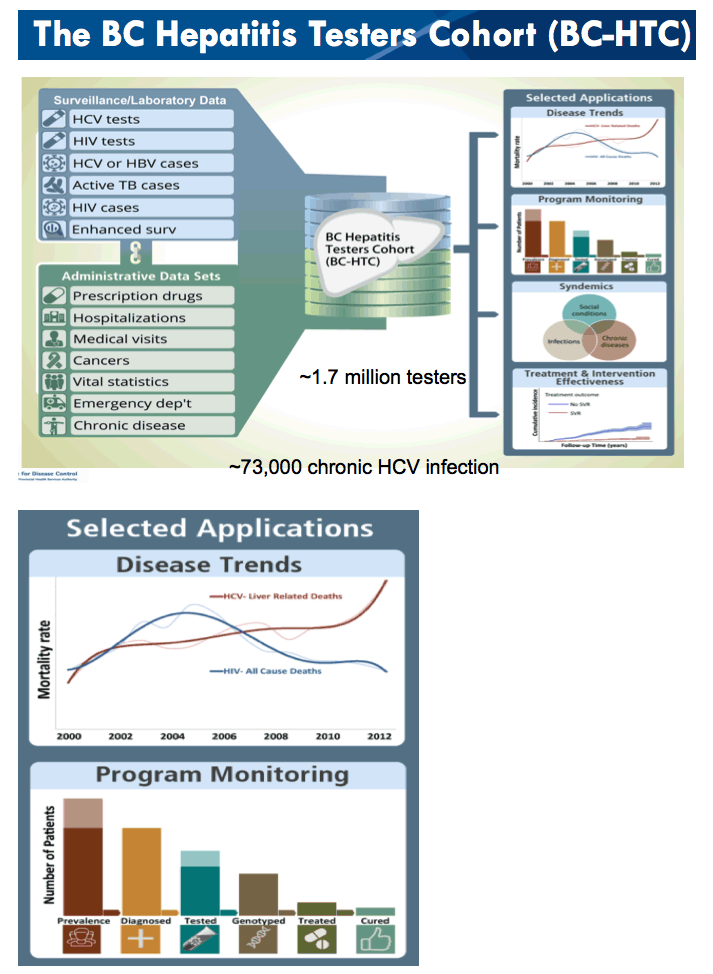
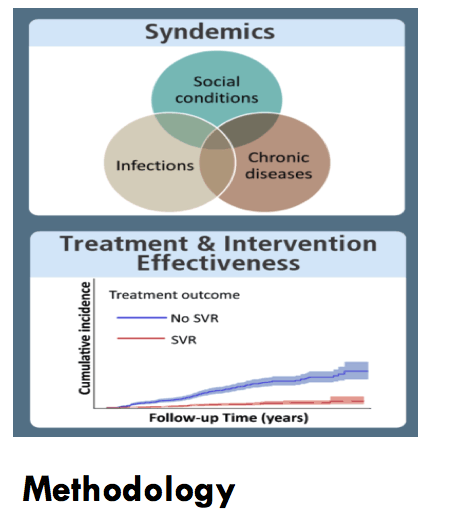
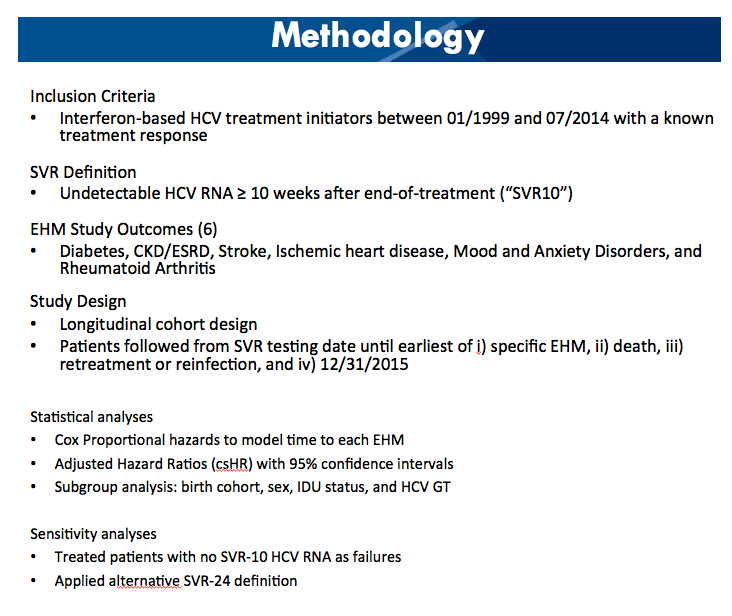
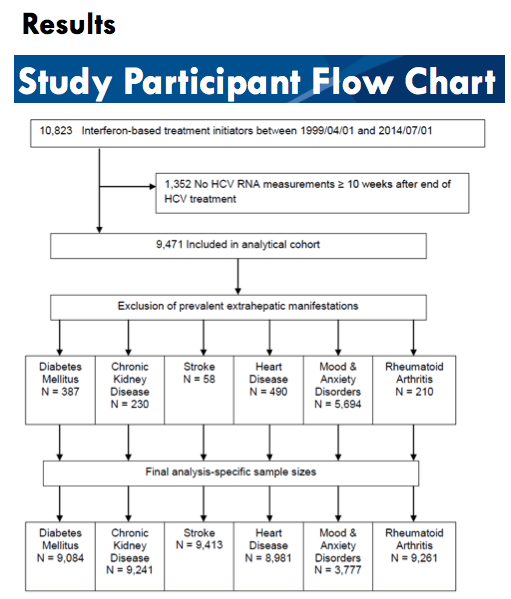
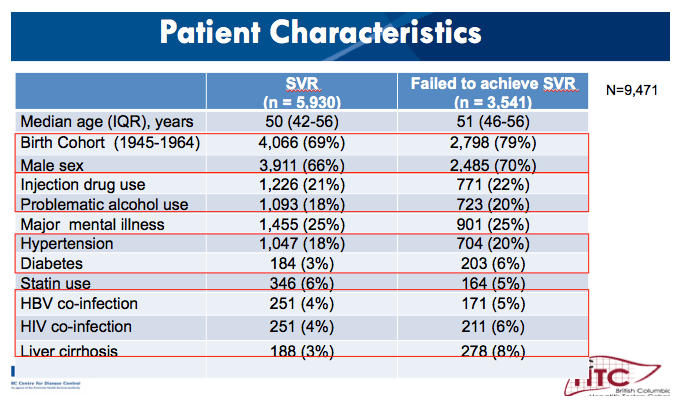
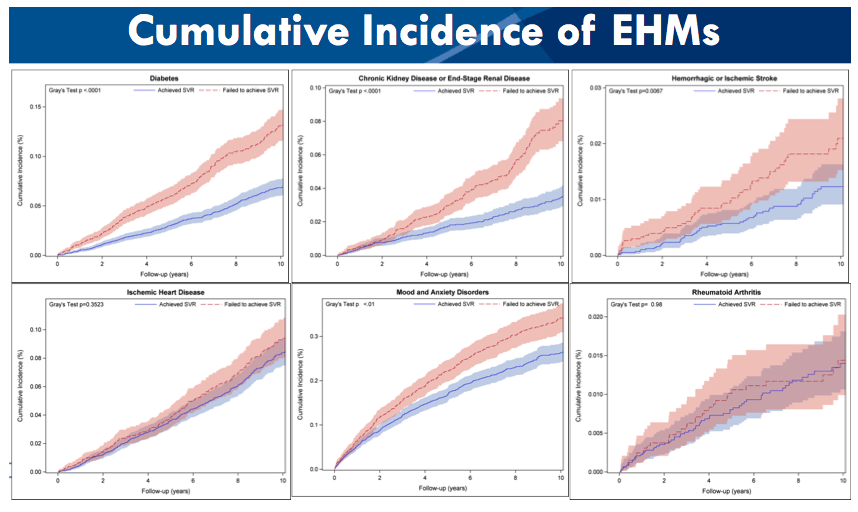
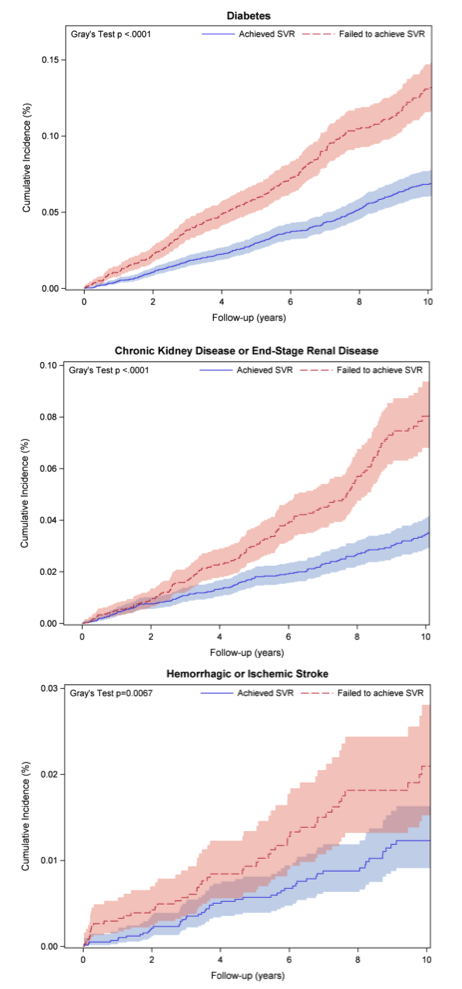
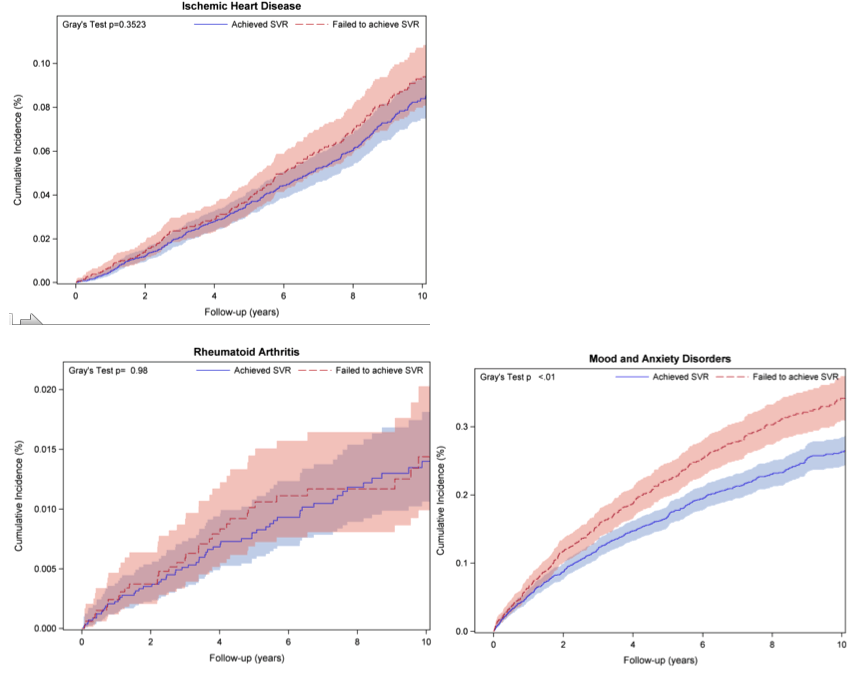
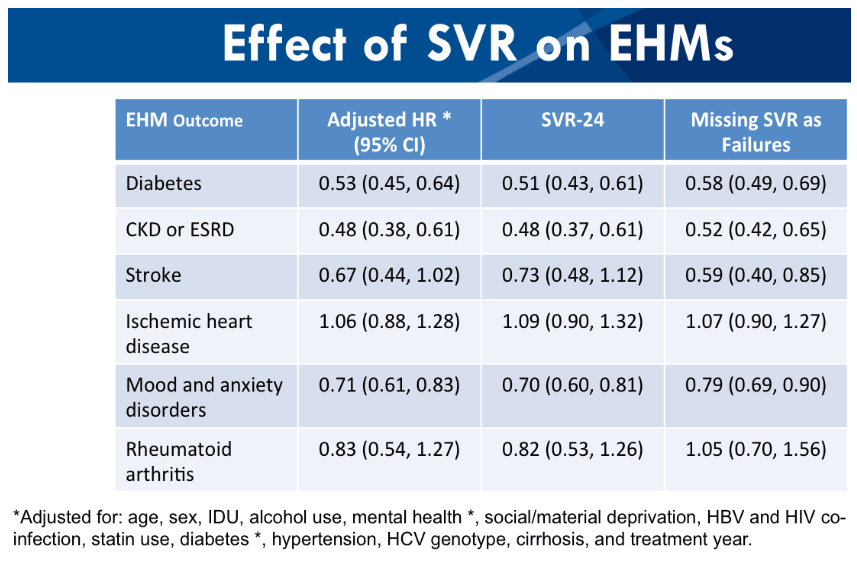
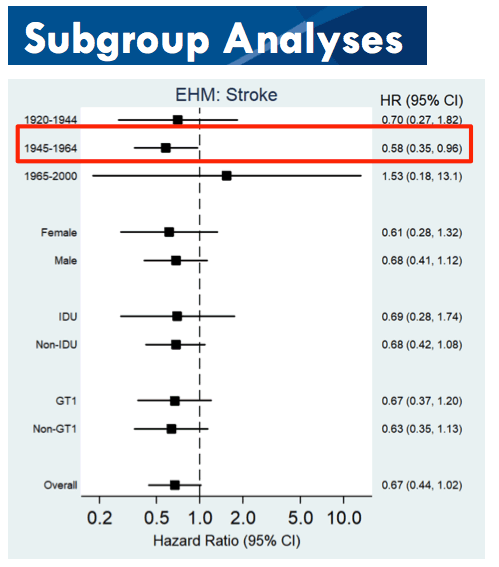
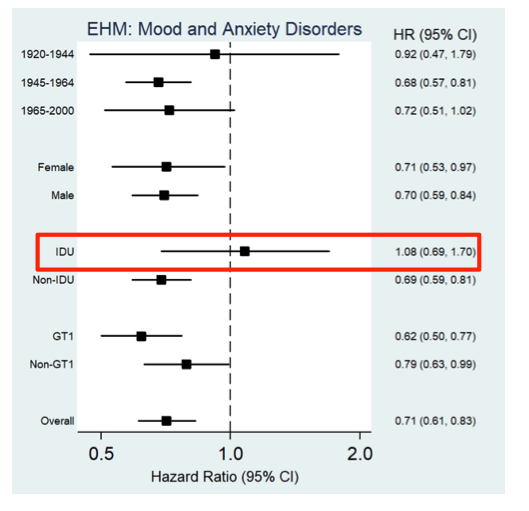
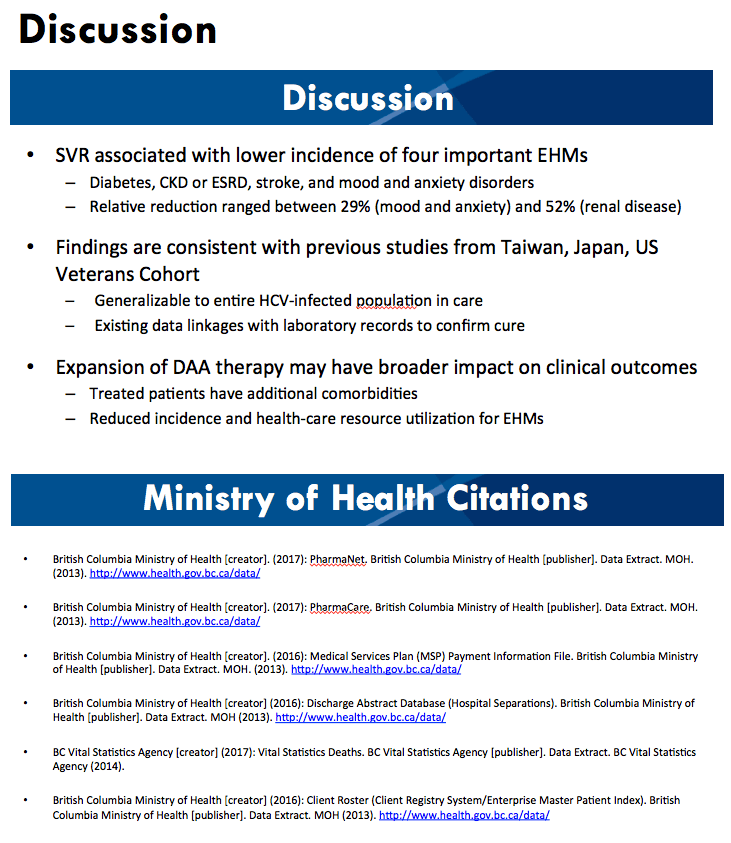
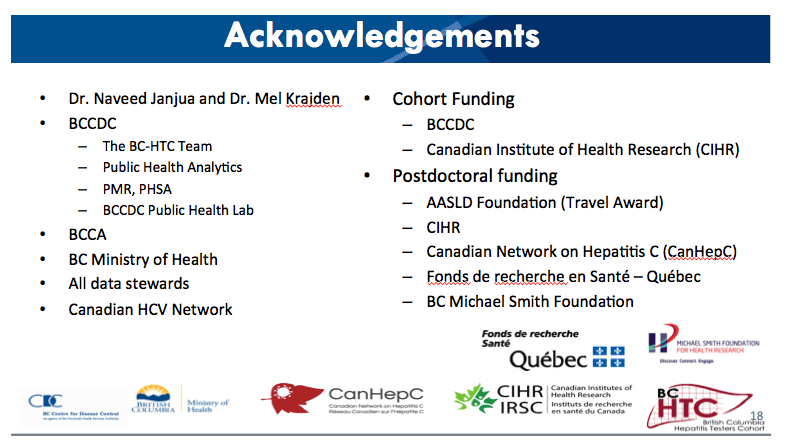
|
| |
|
 |
 |
|
|